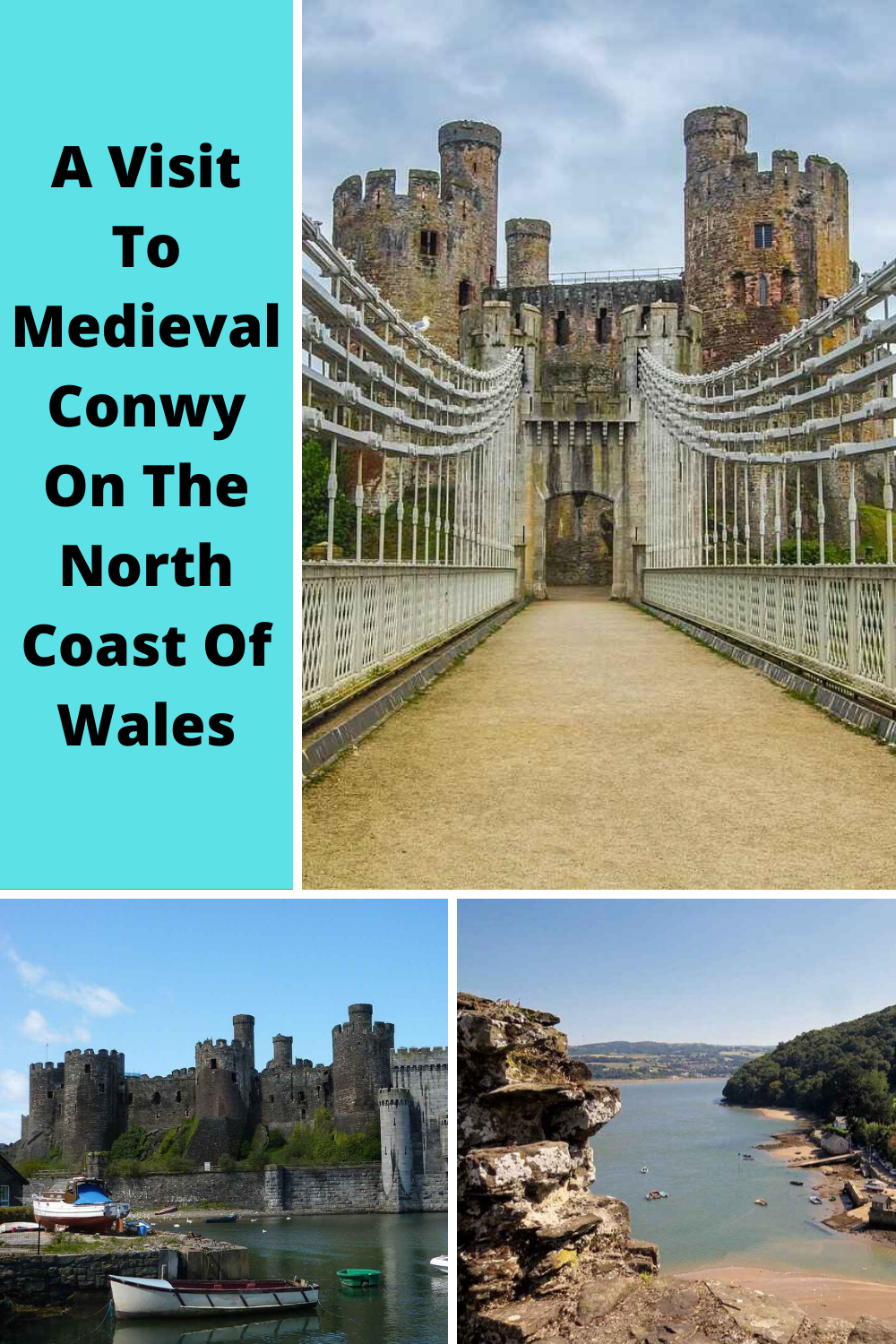A Visit To Medieval Conwy On The North Coast Of Wales
 Conwy is nestled on the coast of northern Wales, along the River Conwy. While small, this medieval walled town is surrounded by stunning landscapes and is host to many historic and fascinating sites. Let’s take a brief tour of the town.
Conwy is nestled on the coast of northern Wales, along the River Conwy. While small, this medieval walled town is surrounded by stunning landscapes and is host to many historic and fascinating sites. Let’s take a brief tour of the town.
Conwy Castle and Walls
This striking, medieval fortress has stood tall in Conwy for 700 years. Historians and archaeologists have restored the spiral staircases in the castle’s towers, allowing visitors to climb to the top and walk around on the battlements. Here they can enjoy panoramic views over the harbor and streets of Conwy, backed by vistas of the rugged Snowdonia Mountains.
The town’s historic, defensive walls connect to the castle and encircle Conwy in an unbroken ring. This allows visitors to again walk around, getting unique views as they go of the medieval buildings below. The castle and its walls were built by architect Master James of St George in an amazingly short four years between 1283 and 1287.
Conwy Suspension Bridge
A short, two-minute walk from the castle is the Conwy Suspension Bridge. This was among the first of its kind to be built worldwide. Originally, the Telford suspension bridge was meant for road traffic, but nowadays, it can only be accessed on foot to cross the River Conwy.
The Smallest House in Great Britain
One particularly fascinating visit is Quay House, or as it has been dubbed, the Smallest House in Great Britain. This is one of the original tiny homes and was built in 1900 as what is known as an infill property. The house connected the cottages on either side.
While a number of the cottages in the terraced street have since been demolishes, Quay House stands at the end. In case you are wondering, the Guinness Book of Records has confirmed it to indeed be the smallest house in Great Britain.
Aberconwy House
Constructed in the 15th century, Aberconwy House is the last medieval merchant’s home still standing in Conwy. The first two floors are constructed of stone, while the upper floor hangs over the street below and is half-timbered.
Inside the house a stone fireplace and oriel window can be seen as well as other original aspects, including works of art. The house was acquired by the National Trust in 1934 after it was bought by one Alexander Campbell, the Blair of Llandudno. Interestingly, he purchased it to stop the house being shipped off to America.
3 Beautiful White Villages In Andalucia, Spain https://t.co/0Fn7Er3XTL pic.twitter.com/rHGShr4EcQ
— Annemarie @ TMT (@touristmtravel) March 24, 2020
Plas Mawr
This beautiful Elizabethan townhouse was built in the 16th century and of all the historic buildings in Conwy, this one really stands out. Plas Mawr translates to Great Hall, which is an apt name, considering the beautiful architecture of the house. The interior and exterior have been skillfully restored to their former glory.
Visitors to Plas Mawr can enjoy an audio tour through the house, learning what it was like to be among the Tudor gentry, their servants and also learn about the restoration of the townhouse. It was originally built for one Robert Wynn and throughout the home, his initials “RW” can clearly be seen in the intricate décor.
There is so much more to Conwy
Besides the historic and fascinating buildings and sites in the town, Conwy has a glorious sandy beach and a lively marina. On the outskirts of the town, RSPB Conwy is a nature reserve, set up for the protection of birds. The site offers a range of natural habitats, nature trails, plenty of wildlife and birds, along with a picnic area and café. This is perfect for a day out in the fresh air for the whole family.
Make a plan to visit Conwy in the north of Wales for its history, its beauty and many more fascinating historic locations to see.
Share your thoughts in the Comments section below, on our Facebook Page, Follow Our Twitter Account or Head Over To Our Pinterest Page!

